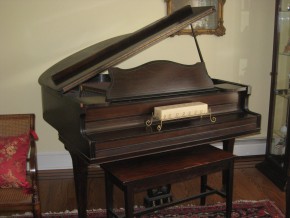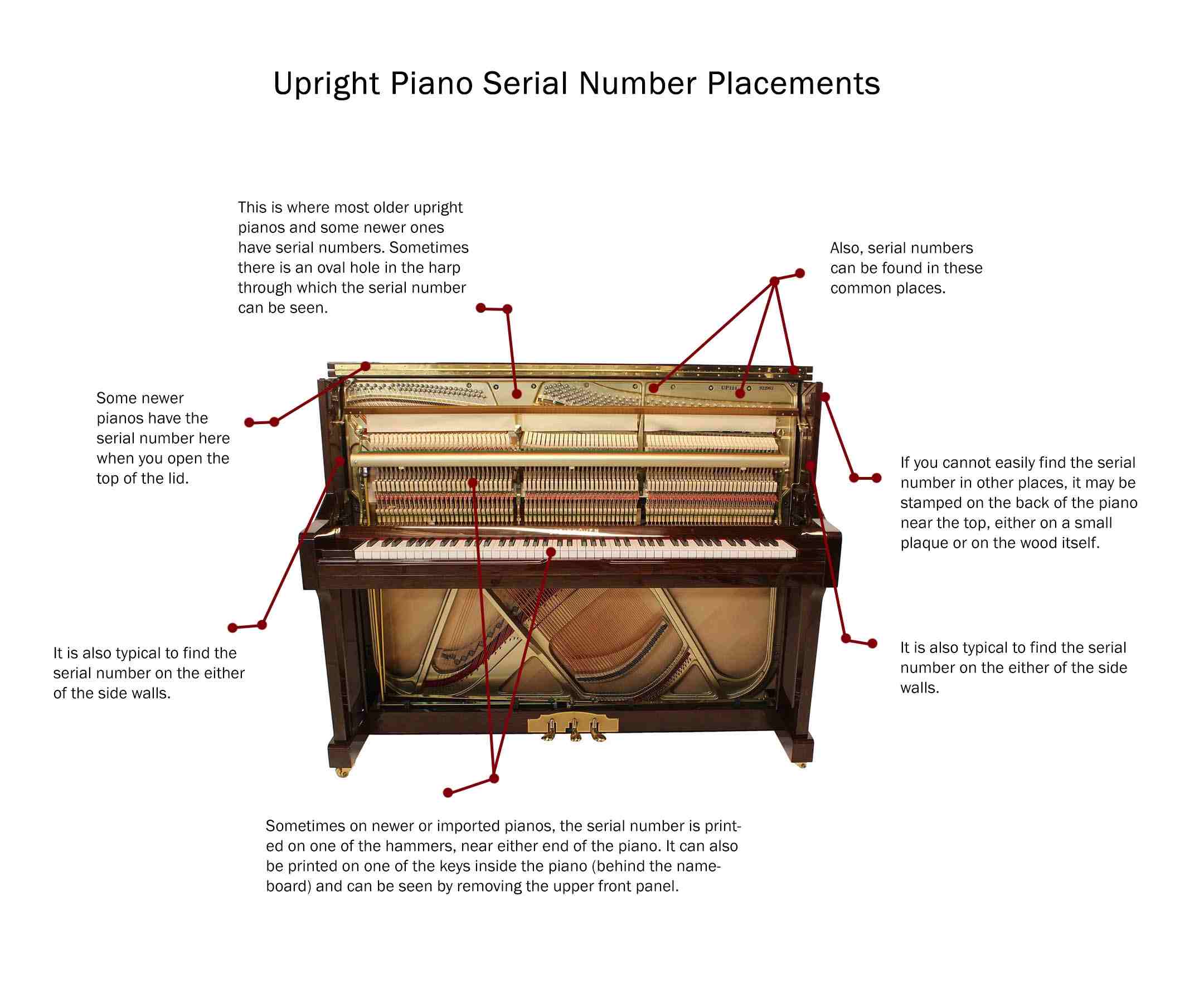Steck Pianola Serial Number
Party Time at the Player Piano - Pianauto Music Roll Leader, Brazil, c.1920.IntroductionWhereas a Piano Player sits in front of a normal piano, and plays it by means of a set of felt-covered fingers, a Player Piano has all the mechanisms builtinside the one case. This applies equally to grands and to uprights, and it saves the inconvenience of having two separate pieces of furniture for the one purpose. Italso means that everything remains more reliably in adjustment, and that the pianolist sits at the same instrument from which the audible music issues forth. Asmentioned on our Piano Players page, the complete instruments were actually the first to be built and sold, but they failed to take the markets by storm, becausethey were not initially available in the best known makes of piano, and because most music lovers already had their own instruments, and did not want to buy completelynew pianos for the simple purpose of playing music rolls.The Earliest Player PianosRobert W. Pain, who seems to have been a one-man Aeolian Company Experimental Department in the late nineteenth century, built a few electrical interior players, even as early asthe 1880s, but these were not what we would think of today as normal player pianos. Standard built-in player pianos can be traced back to the late 1890s, and both Wilcox andWhite and the Aeolian Company sold a few. The Wilcox and White player was called the, whileAeolian marketed the Aeriol Piano (later called the Aeriola), which was designed and built by Theodore P.
Brown of Worcester, Mass.The Aeriol Piano - Aeolian Company Advertisement, New York, 1901.Whereas the 1895 Angelus grand piano, seen on our Piano Players page, has the roll under the keyboard, the Aeriol Piano placed it in the normal position for an upright,behind a small sliding door in the central panel above the fall. The various control levers, however, are positioned under the keyboard, implying that they cannot have beeneasy to use in any sensitive way. Theodore Brown applied to patent a very similar player piano mechanism in April 1896, and it is clear that dynamic control was somewhat rudimentary.The Aeolian Company's Pianola PianoIn August 1903, the Weber Piano Company was purchased by the Aeolian Company, which at the same time reconstituted itself as the Aeolian, Weber Piano and PianolaCompany, taking its names from the three main areas of its subsequent business, the Aeolian, the Weber Piano, and the Pianola. It acquired Weber at a very advantageousprice, in view of an imminent mortgage on the large Weber factory in lower Manhattan.
The name of Weber was very well respected, and Aeolian suddenly found itself in a positionwhere it could manufacture both Pianolas and first-rate pianos, all within its own organisation. Consequently it introduced the new Pianola Piano in 1904, based on a substantialWeber design, which still looks remarkably like the Aeriol Piano from 1897. The main visible difference is the siting of the control levers at the frontof the keyboard, just where they would be most easy to use.The Weber Pianola Piano - Aeolian Company Advertisement, New York, Autumn 1904.Technical progress on the Pianola Piano closely matched that of the Pianola itself, with the Metrostyle and the Themodist playing their part, and the transition to 88 notesfollowing in January 1909. An agreement was made with Steinways, whereby the Aeolian Company became exclusively able to install a foot-operated Pianola mechanism into Steinwaypianos. Other manufacturers were also doing good business with interior players, and these soon outgrew the push-up piano players in popularity. A reflection of this trend canbe seen in an Aeolian Company advertisement from the autumn of 1911, in which the old 'silent' piano sits languishing on the brownstone streets of New York, traded into make way for the newly acquired Pianola Piano.'
The Passing of the Silent Piano' - Aeolian Company Advertisement, USA, September 1911.Worldwide Pianola PianosIn truth, player pianos had become very big business, and the main piano manufacturers fell over themselves to include player models in their catalogues. By late 1911, the Aeolian Company hadoutgrown its New York premises at 362, Fifth Avenue, and it commissioned the construction of a new Aeolian Hall on West 42nd Street, close by the New York Public Library. This ratherglamorous building was opened in October 1912, and became the home of the New York Symphony Orchestra, as well as the worldwide headquarters of the sizeable Aeolian empire.Artist's Impression of the new Aeolian Hall, New York, Autumn 1911.In March 1914, Aeolian introduced the, a reproducing piano which could play back rolls recorded by well-known pianists and composers, andfrom then on in the United States, the foot-operated Pianola seemed less interesting, both to Aeolian's customers and to its marketing department. After all, America is the land of automation.But in Europe, and to some degree in Australia, the normal Pianola Piano remained popular throughout the 1920s. There was in England, for example, a class of liberally educated gentleman, which hadits own ideas on how to interpret the music it wished to hear, but which lacked the finger technique to put this into practice on a normal piano.
The Pianola and the PianolaPiano, with their mechanically arranged music rolls, suited this group of music lovers very well, so that George Bernard Shaw had two player pianos, H.G. Wells had one, and so did Arnold Bennett.
.Do to an overwhelming amount of customers needing date of manufacturer information for their pianos, we are no longer able to give this service for free. If you still would like for us to look it up we would ask a nominal fee to be paid through PayPal. Many piano manufacturers placed serial numbers in a variety of places.Pianos also have other numbers printed on them such as part numbers and many other pianos do not have a serial number at all. Many pianos will have a 4, 5 or 6 digit serial number to identify the age of the piano. Using this number, along with the manufacturer, the age of the piano can sometimes be determined. The areas to look for these numbers vary from each company but here are some common places to look along with some photos.1.

Serial Number
Piano serial number of uprights are many times located on the inside of the piano stamped onto the plate between the bass string section and the treble string section.2. Other upright serial numbers are located on the cast iron plate but placed above the treble string section.3. Grand piano serial numbers are placed in many areas as the photos show.
There are seven examples but your serial number placement could be in yet a different location and may require some searching.Be sure to find the manufacturer’s name stamped on the cast iron plate or in the wood. Do not rely on the name that is printed on the fall board as this does not guarantee the name of the manufacturer.
Steck Pianola Serial Numbers

Some serial numbers are printed on the back board of vertical pianos and require you to move the piano out from the wall. We have also seen serial numbers of grand pianos stamped into the lyre assembly and nowhere else. A thorough examination is required to locate each pianos individual serial number.